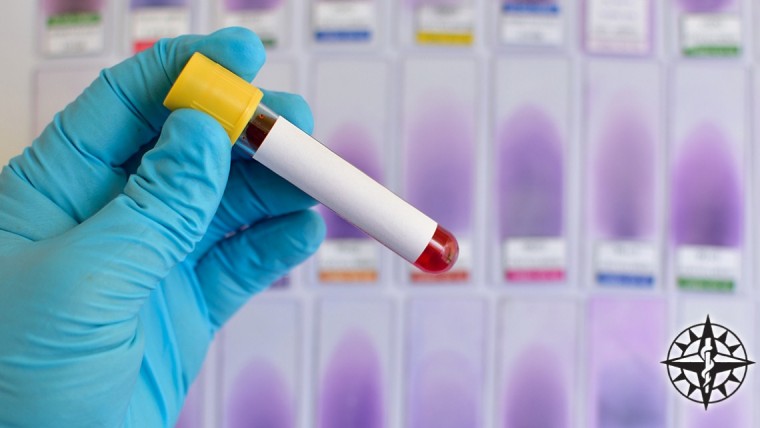Published on: July 22, 2022
In a healthcare setting, the only thing that should be spreading around is education. Infection Prevention and Control (IPC) is a scientifically proven program that effectively prevents the transmission of any potential infection to and from patients and health care workers.
Through these proven IPC programs, healthcare settings can provide both patients and team members with reassurance in their safety and overall health inside their facilities. These programs can educate people on the epidemiology of the diseases, risks, prevention, treatment, and other valuable information (Minnesota Department of Health).
Any healthcare facility in Tampa (and beyond), regardless of how big or small, should be implementing educational programs and safety precautions to protect all people. Let us find out more information about Infection Prevention and Control programs and how your facility can benefit from them!
What is the Goal?
The main objective of Infection Prevention and Control programs is to decrease the spread of infectious diseases or healthcare-associated infections (HAIs) across healthcare facilities. While healthcare facilities aim to keep their patients healthy, facilities can become breeding grounds for infections and diseases.
Statistics show that about 1 in 10 patients admitted into a hospital will contract an HAI. As a result, these infections can impact the patient’s recovery time, treatment plan, and overall cost. By implementing a scientifically backed program designed to educate everyone, more visitors, patients, and workers can be protected through these practices.
The goal is to allow patients to go to healthcare facilities to receive the necessary treatment without worrying about contracting any other disease. Learn more about infection control by watching this short YouTube video linked below.
What are the Guidelines?
As a result of the COVID-19 pandemic, Infection Prevention and Control programs have been even further improved and reinforced not only nationwide but internationally as well. As a result of the COVID-19 pandemic, people worldwide are avidly following many important guidelines to reduce the chances of an outbreak happening again.
While some of these guidelines should be standard protocol, it is important to go over them to check and see if your healthcare facility is following them. If your healthcare facility is not following or teaching these guidelines, then you should reconsider visiting that facility for your own health and safety.
The following are some of the top three most common guidelines that ALL healthcare facilities should be implementing:
- Hand Hygiene. Since many infections can be spread by the hands, implementing proper hand hygiene is crucial for every single person in a health care setting. This is not your typical “washing hands with warm water” routine. Proper hand hygiene should include hand-rubbing in warm water with antimicrobial soap or properly using alcohol-based hand rubs, maintaining trimmed nails to ¼ of an inch, and changing out gloves with every patient (CDC).
- Disinfection / Sterilization. Patients can be more susceptible to infections, so it is even more important to make sure everything is disinfected and/or sterilized prior to use. Use of a disinfecting routine should include areas like soft surfaces, laundry, electronics, and high-touch surfaces (CDC). As for sterilization, a routine should include proper cleaning of equipment, monitoring of airflow, water quality, and surveillance for any potential environmental contaminants (CDC).
- Injection Safety. Since there is a list of bloodborne diseases and viruses, syringes, needles, and medication vials need to be handled under the specific and cautious care of a trained professional. Medication should NEVER be administered through the same syringe to another patient even after switching needles. Needles should always be changed after use and never reused unless specified as a multi-dose vial (CDC).
While there are many other guidelines involved in an Infection Prevention and Control Program, these three are some of the most important throughout all healthcare facilities. It does not matter how simple or repetitive they may seem; these measures are scientifically proven to prevent and protect countless people from infections.
Look at this short informational YouTube addressing the WHO’s Core Components of Infection Prevention & Control Program.
Training and Resources
Hospitals and health care facilities offer training and resources to their staff to educate them on the prevention of the spread of infections to their patients. It is recommended that all healthcare workers receive up-to-date training on the protocols and potential risk factors for infection control.
Even if you do not work in the healthcare world, these protocols are great practices to implement in your office or home life. If you are looking for ways to learn more about Infection Prevention and Control programs and how you can implement the guidelines into your everyday life, check out the following training resources:
- Infection Control | CDC
- Infection Prevention & Control: Institutional Infection Prevention and Control – Minnesota Department of Health (state.mn.us)
- Infection Prevention and Control: 1. Role and structure of infection prevention and control programs (bettercare.co.za)
- Infection Prevention & Control | Stanford Health Care
- Infection Prevention and Control Guidelines – Minnesota Dept. of Health (state.mn.us)
- Microsoft Word – Infection Control Prevention Plan.docx (uscompliance.com)
- Immuware
Infection Prevention and Control at IDATB
At Infectious Disease Associates of Tampa Bay (IDATB), we specialize in providing high-quality healthcare services for patients in the Tampa Bay metro area. We understand the importance of maintaining and improving the overall health of both our patients and our team.
That is why we take Infection Prevention and Control very seriously in our facility and act as a consultant for several facilities in the Tampa Bay metro area. By following the recommended guidelines and continuing to educate, we can confidently provide you with the services you need.
If you have any questions or concerns about infection prevention and control programs, then please call IDATB at 813-251-8444.





